Tang dynasty (618–907), an introduction
டாங் வம்சம் (618-907) சீன வரலாற்றில் பொற்காலமாக கருதப்படுகிறது. இது குறுகிய கால சுய் வம்சத்தின் (581-618) வெற்றி பெற்றது, இது கிட்டத்தட்ட நானூறு ஆண்டுகள் துண்டு துண்டான பிறகு சீனாவை மீண்டும் ஒன்றிணைத்தது. சூயி அமைத்த அடித்தளங்களிலிருந்து டாங் பயனடைந்தனர், மேலும் அவர்கள் சூய் பேரரசர்கள் நிறுவிய அரசியல் மற்றும் அரசு நிறுவனங்களில் மேலும் நீடித்த அரசை உருவாக்கினர். வலுவான இராணுவ சக்தி, வெற்றிகரமான இராஜதந்திர உறவுகள், பொருளாதார செழிப்பு மற்றும் காஸ்மோபாலிட்டன் கலாச்சாரம் ஆகியவற்றிற்காக அறியப்பட்ட டாங் சீனா, சந்தேகத்திற்கு இடமின்றி, இடைக்கால உலகின் மிகப்பெரிய பேரரசுகளில் ஒன்றாகும்.
டாங் வம்சத்தின் போது, சீனா தனது நிலப்பரப்பை (பாதுகாப்பான மாநிலங்கள் உட்பட) கிழக்கில் கொரிய தீபகற்பம், வடக்கே மங்கோலியாவின் படிகள், மேற்கில் இன்றைய ஆப்கானிஸ்தான் மற்றும் தெற்கில் வடக்கு வியட்நாம் வரை விரிவுபடுத்தியது. ரோம் வரை சென்றடைந்த பட்டுப்பாதையில் - டாங் அமைதி மற்றும் பாதுகாப்பைப் பாதுகாத்தார். கிழக்கு மற்றும் மத்திய ஆசியா முழுவதிலுமிருந்து வணிகர்கள், இராஜதந்திரிகள் மற்றும் யாத்ரீகர்கள் வந்தனர். அவர்கள் புதிய மதங்கள், யோசனைகள் மற்றும் கலாச்சார நடைமுறைகளை டாங் எலைட் வட்டங்களால் ஆர்வத்துடன் ஏற்றுக்கொண்டனர். சாங்கான் மற்றும் லுயோயாங் இரண்டு தலைநகரங்களும் உலகின் பல்வேறு பகுதிகளிலிருந்து வந்த வெளிநாட்டினரால் வெள்ளத்தில் மூழ்கின.
இந்த நம்பிக்கையான காஸ்மோபாலிட்டனிசம் டாங் சீனாவின் அனைத்து கலைகளிலும் பிரதிபலிக்கிறது. ஜவுளி, உலோக வேலைப்பாடுகள் மற்றும் கண்ணாடிப் பொருட்கள் போன்ற பட்டுப் பாதையில் சரக்குகளின் தொடர்ச்சியான பரிமாற்றம், டாங் கைவினைஞர்களை புதுமையான நுட்பங்கள், வடிவங்கள் மற்றும் வடிவமைப்புகளை பரிசோதிக்க தூண்டியது.
மிகவும் பொதுவான மற்றும் நன்கு அறியப்பட்ட டாங் மட்பாண்டங்களில் ஒன்று 'மூன்று வண்ண' கிளேஸ் (சஞ்சாய்) பொருட்கள். ஆற்றல் மிக்க மாதிரி மற்றும் பிரகாசமான வண்ணம் கொண்ட, டாங் சஞ்சாய் வேர்ஸ் அடக்கம் பயன்பாட்டிற்காக ஒதுக்கப்பட்டதாக கருதப்படுகிறது. சான்சாய் கல்லறை சிலைகள் டாங் காலத்தின் அன்றாட வாழ்க்கையைப் பற்றிய தெளிவான படத்தைக் கொடுத்தன.
பாக்டிரியன் ஒட்டகங்கள், சவாரி செய்யும் குதிரைகள், வெளிநாட்டு ஊழியர்கள், வணிகர்கள் மற்றும் இசைக்கலைஞர்கள் அனைவரும் பிரபலமான பாடங்களாக இருந்தனர். டாங் பாட்டர்களும் சோங் வம்சத்தின் மட்பாண்ட ரசனைக்கு அடித்தளமாக அமைந்த வெள்ளைப் பாத்திரங்கள் மற்றும் பச்சை-மெருகூட்டப்பட்ட செலாடான்கள் உட்பட ஒற்றை வண்ணப் பொருட்களைத் தயாரிப்பதில் திறன்களைப் பரிசோதித்து மேம்படுத்தினர்.
டாங்கின் போது இயற்கை ஓவியம் இரண்டு திசைகளை எடுத்தது. நீதிமன்ற ஓவியர்களால் உருவாக்கப்பட்ட நீல-பச்சை நிலப்பரப்பு எனப்படும் ஓவியத்தின் பாணி ஒன்று, கூடுதல் கனிம வண்ணங்களுடன் நேர்த்தியான கோடுகளில் செயல்படுத்தப்பட்டது. இது மத்திய ஆசிய ஓவிய பாணிகளால் ஈர்க்கப்பட்டிருக்கலாம். மற்றொன்று, கவிஞர்-ஓவியர் வாங் வெய் (701–761) உருவாக்கிய ஒரே வண்ணமுடைய மை ஓவியம். உத்தியோகபூர்வ பரீட்சை முறையின் மூலம் அரசாங்க அதிகாரிகளான புதிதாக வளர்ந்து வரும் சமூக உயரடுக்கினரால் இந்த பாணி விரும்பப்பட்டது. சாங் வம்சத்தின் (960-1279) போது இரண்டு பாணிகளுக்கு இடையிலான பிரிவு மிகவும் தெளிவாகத் தெரிந்தது. அவர்களின் சிறந்த ஓவியத் திறன்களைத் தவிர, பயிரிடப்பட்ட அறிஞர்-அதிகாரிகளில் பலர் சிறந்த கவிஞர்கள் மற்றும் கையெழுத்து எழுதுபவர்களாகவும் இருந்தனர். மூன்று கலைகள் - ஓவியம், கவிதை மற்றும் கையெழுத்து - பின்னர் இணைக்கப்பட்டு 'மூன்று பரிபூரணங்கள்' என்று பாராட்டப்பட்டது.
Tang dynasty (618–907), an introduction
by Smithsonian's National Museum of Asian Art. Created by Smarthistory.
The Tang dynasty (618–907) is considered a golden age in Chinese history. It succeeded the short-lived Sui dynasty (581–618), which reunified China after almost four hundred years of fragmentation. The Tang benefited from the foundations the Sui had laid, and they built a more enduring state on the political and governmental institutions the Sui emperors established. Known for its strong military power, successful diplomatic relationships, economic prosperity, and cosmopolitan culture, Tang China was, without doubt, one of the greatest empires in the medieval world.
During the Tang dynasty, China stretched its territory (including the protectorate states) from the Korean peninsula in the east, to the steppes of Mongolia in the north, to present-day Afghanistan in the west, and to northern Vietnam in the south. Tang secured peace and safety on overland trade routes—the Silk Road—that reached as far as Rome. Merchants, diplomats, and pilgrims came from all over East and Central Asia. They brought with them new religions, ideas, and cultural practices that were eagerly embraced by Tang elite circles. The two capital cities of Chang’an and Luoyang were flooded with foreigners from different parts of the world.
This confident cosmopolitanism is reflected in all the arts of Tang China. The constant exchange of goods along the Silk Road, such as textiles, metalwork, and glassware, inspired Tang craftsmen to experiment with novel techniques, shapes, and designs.
One of the most typical and well-known Tang ceramics are the “three-colored” glaze (sancai) wares. Energetically modeled and brightly colored, Tang sancai wares are thought to have been reserved for burial use. Sancai tomb figurines gave a vivid picture of daily life in Tang times.
Bactrian camels, horses with riders, as well as foreign servants, merchants, and musicians were all popular subjects. Tang potters also experimented with and developed the skills in making single color wares, including white ware and green-glazed celadons, which laid the groundwork for the Song dynasty’s taste in ceramics.
Tang painting prospered, partly thanks to the patronage of the Tang court. Painters from all over the empire were attracted to the court. Figure painting thrived during this period. Famous court painters established themselves with their masterful drawing skills. For example, Yan Liben (c. 601–673) was known for his rich and glowing colors and delicate details; while Wu Daozi (c. 680–759) was famous for his vigorous brushwork.
Landscape painting took two directions during the Tang. One was a style of painting known as blue-green landscape developed by the court painters, executed in fine lines with added mineral colors. It may have been inspired by Central Asian painting styles. The other was the monochrome ink painting developed by the poet-painter Wang Wei (701–761). This style was favored by the newly emerging social elite who became government officials through the official examination system. The division between the two styles became more apparent during the Song dynasty (960–1279). Besides their excellent painting skills, many of the cultivated scholar-officials were also great poets and calligraphers. The three arts—painting, poetry, and calligraphy—have since been connected and appreciated as “the three perfections.”
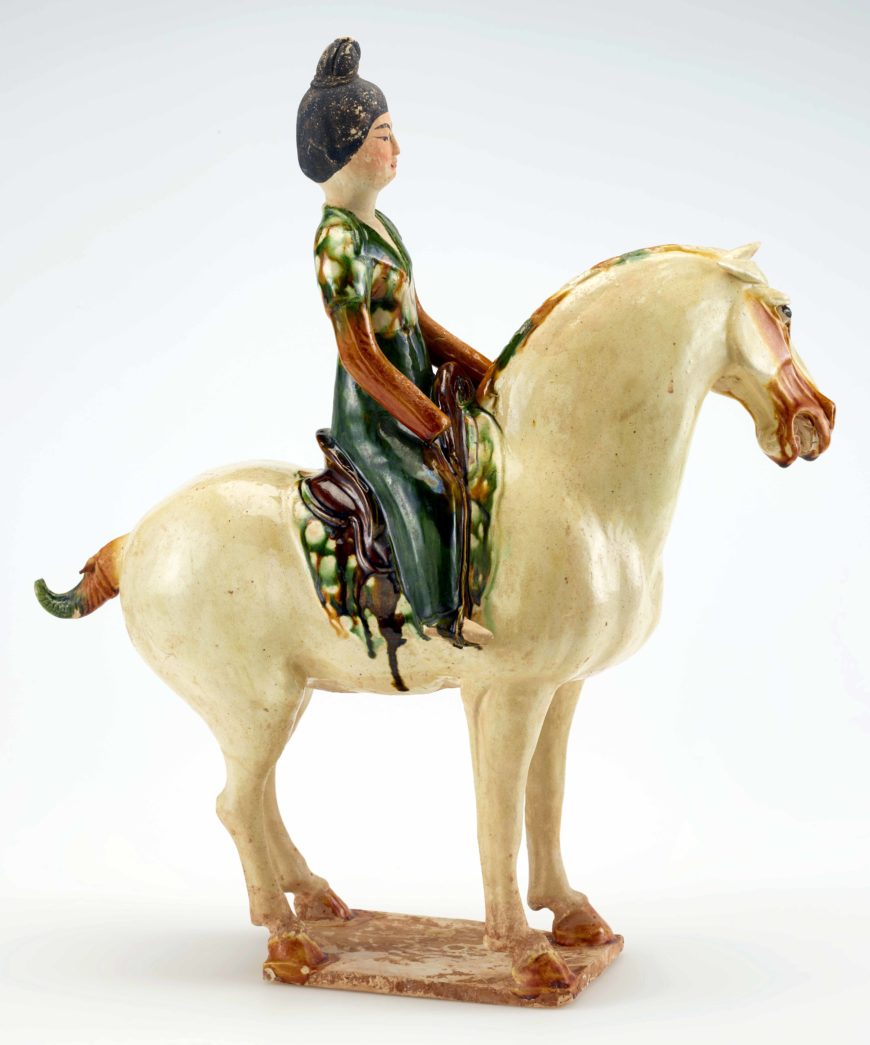
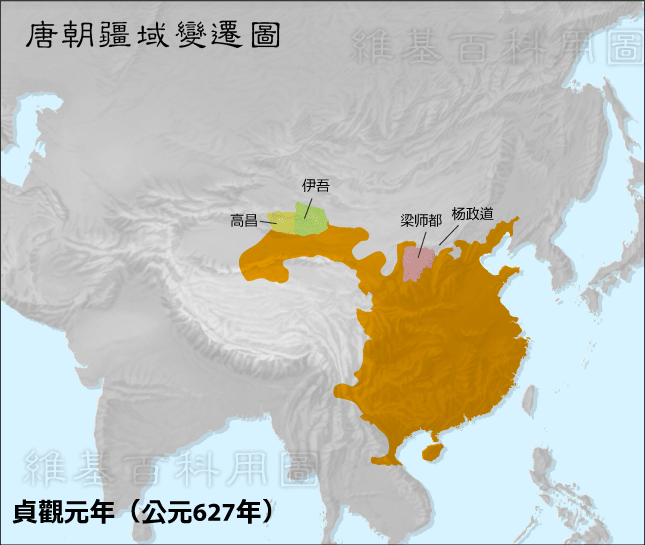
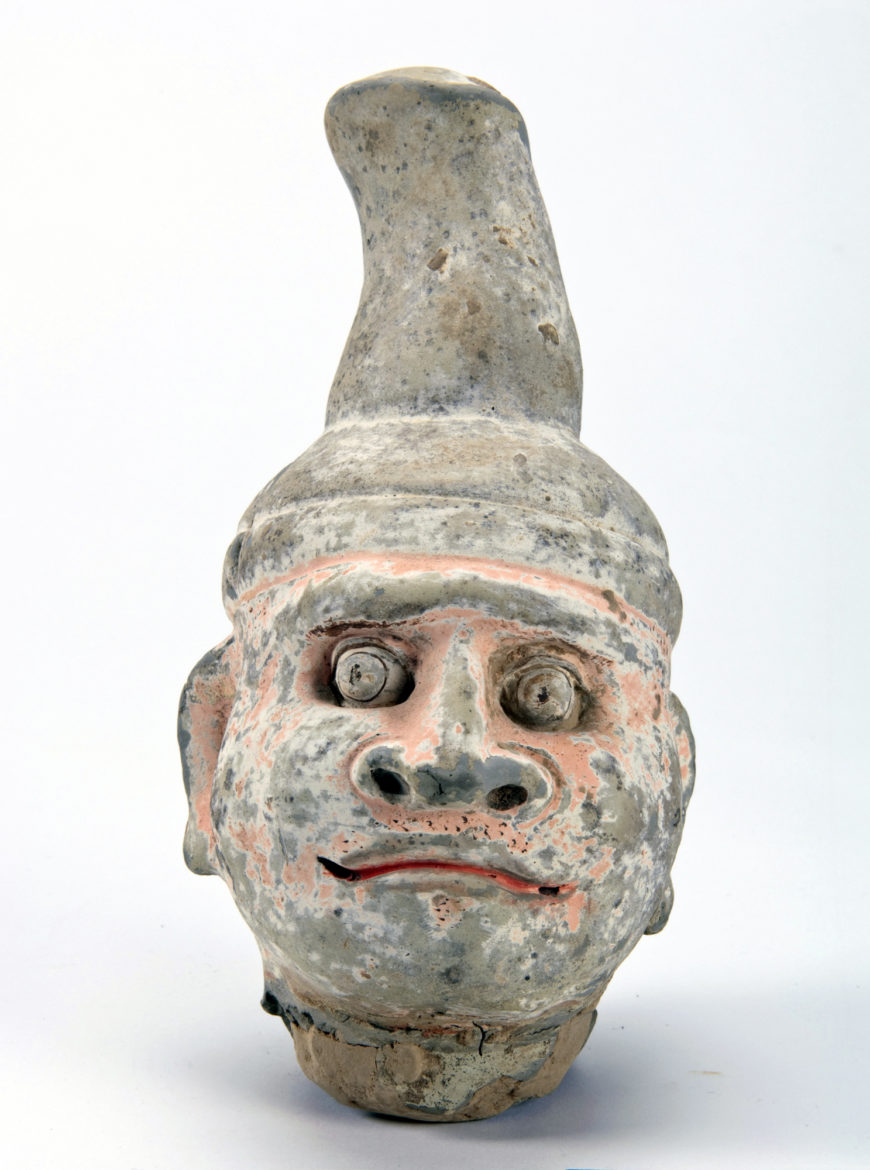
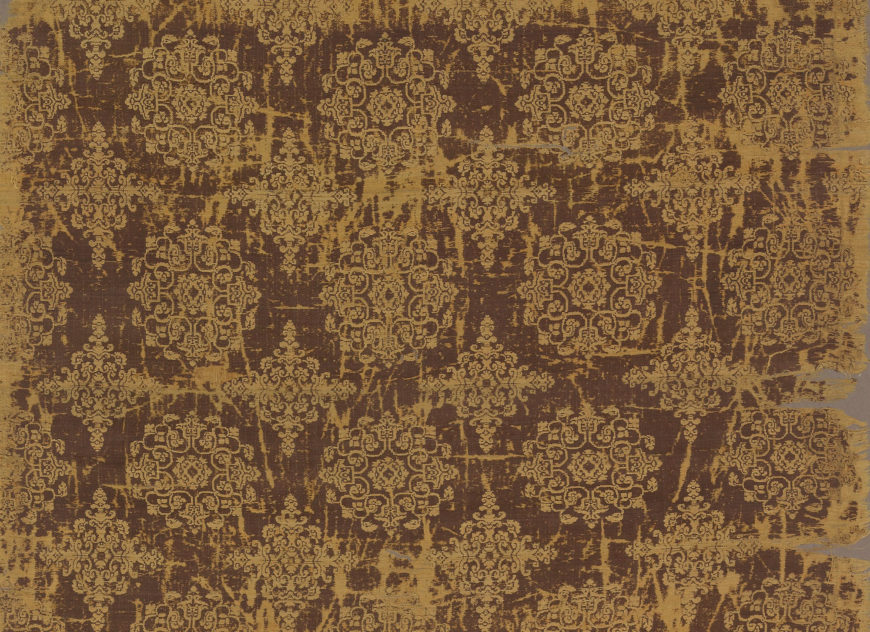
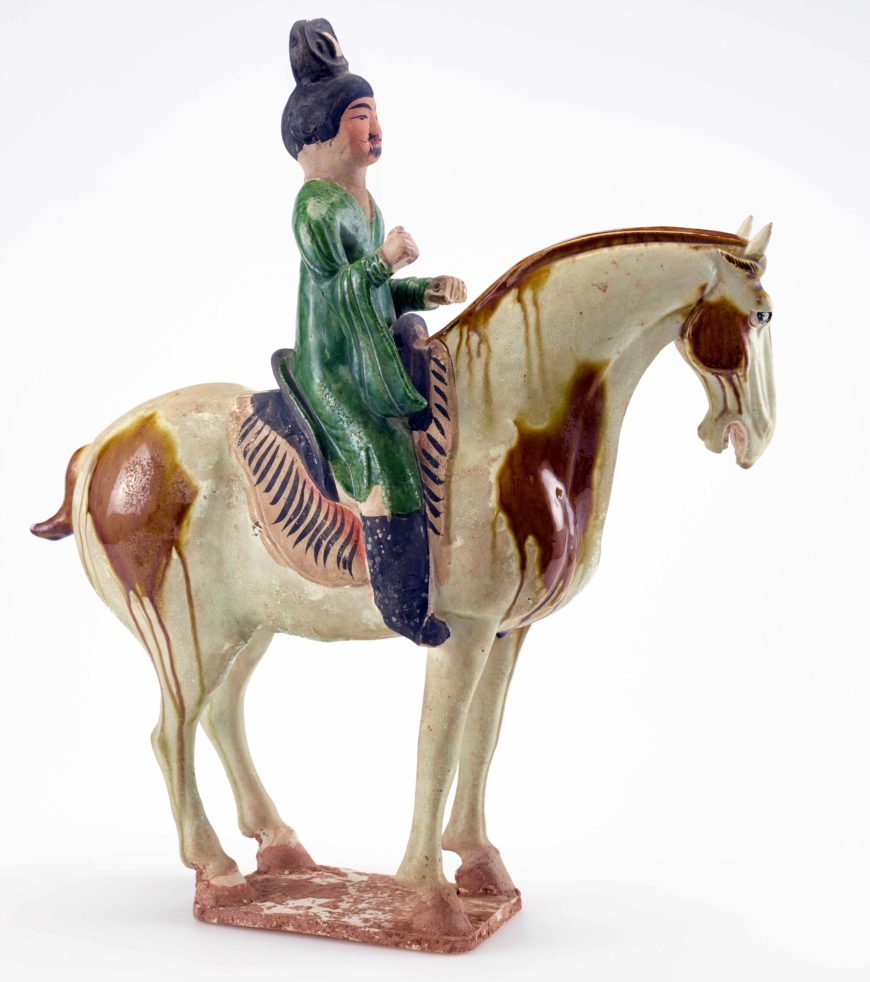
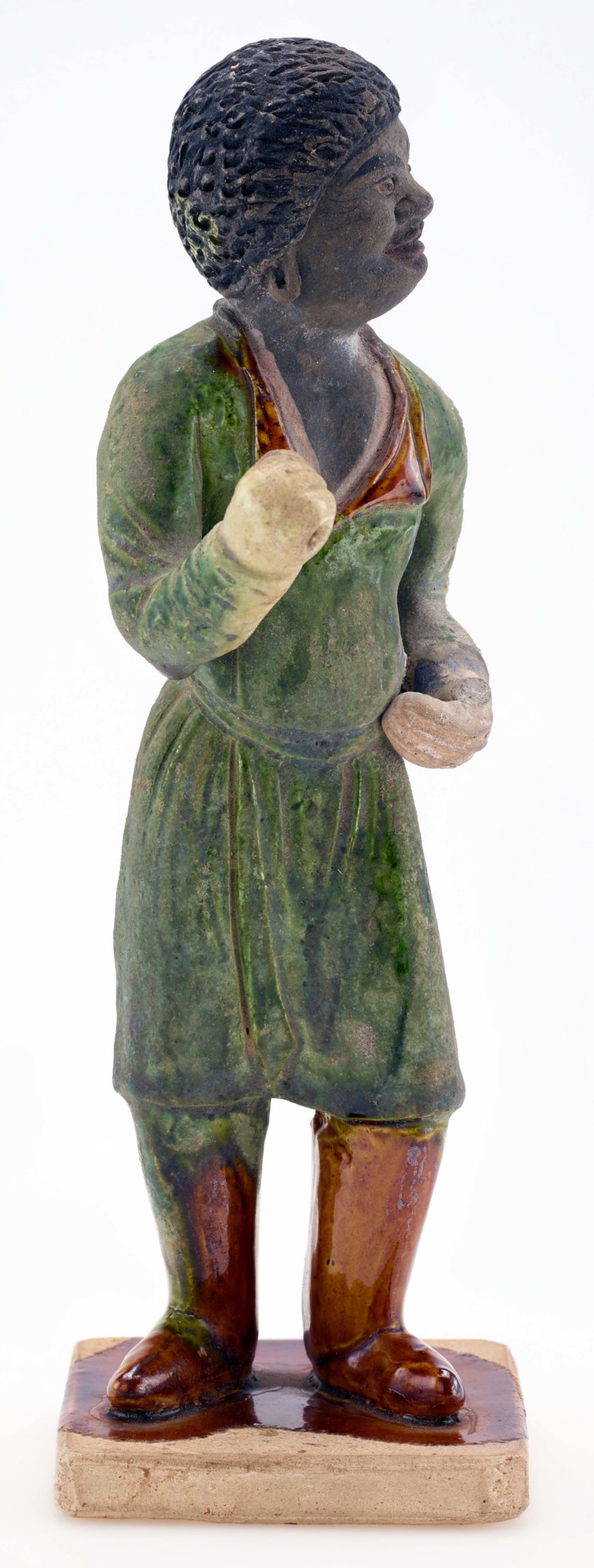
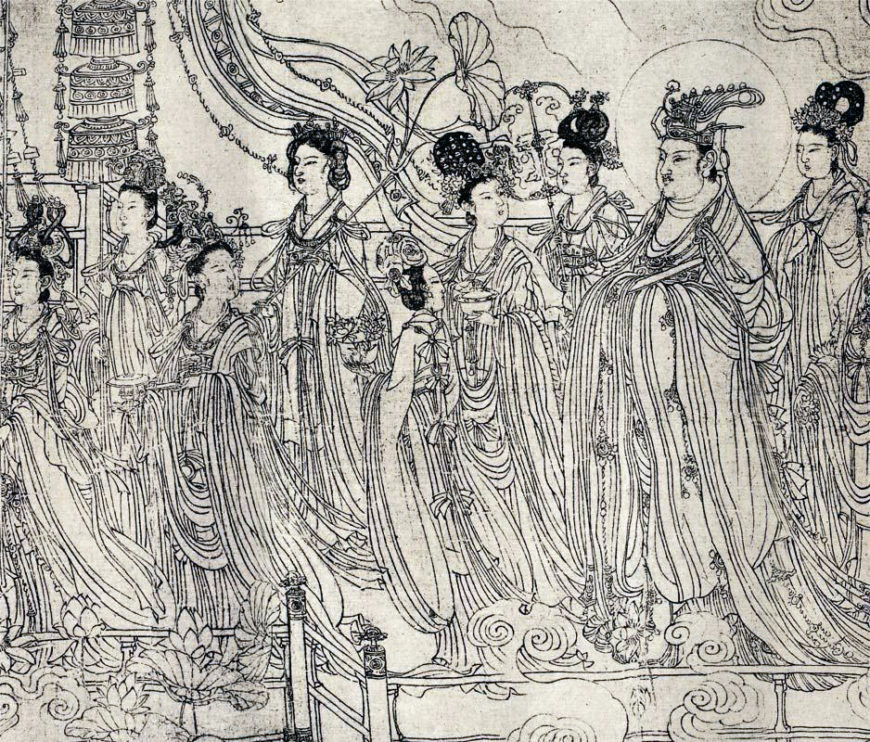

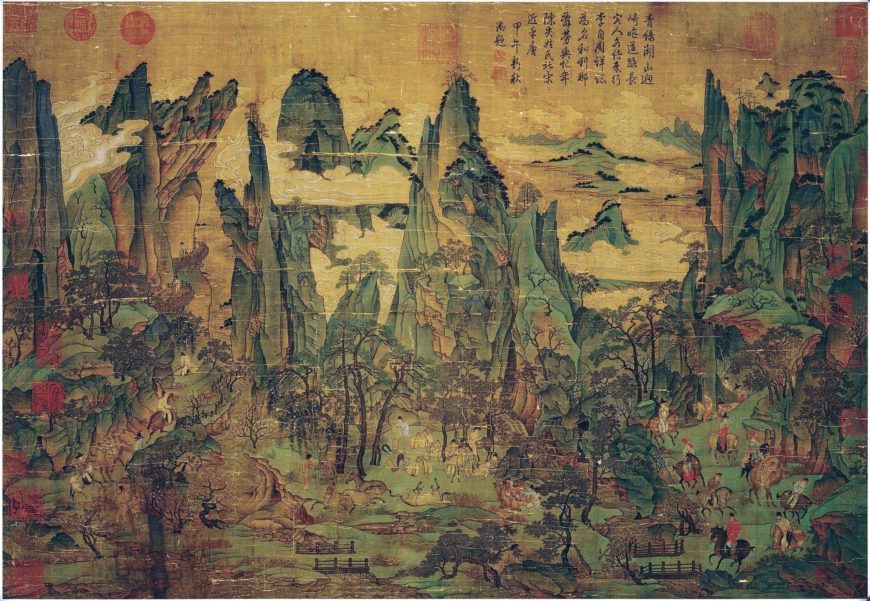
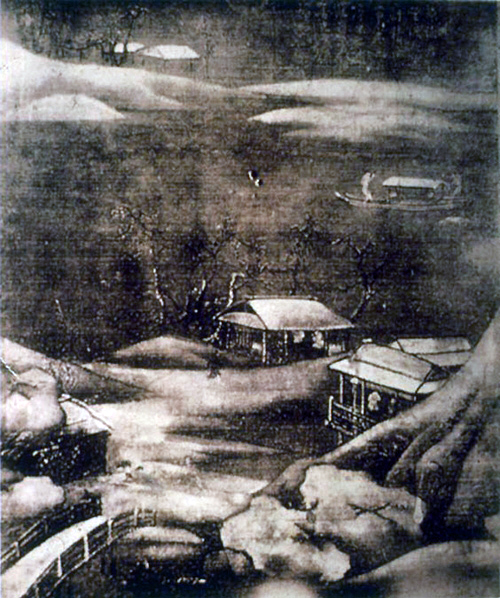
No comments:
Post a Comment